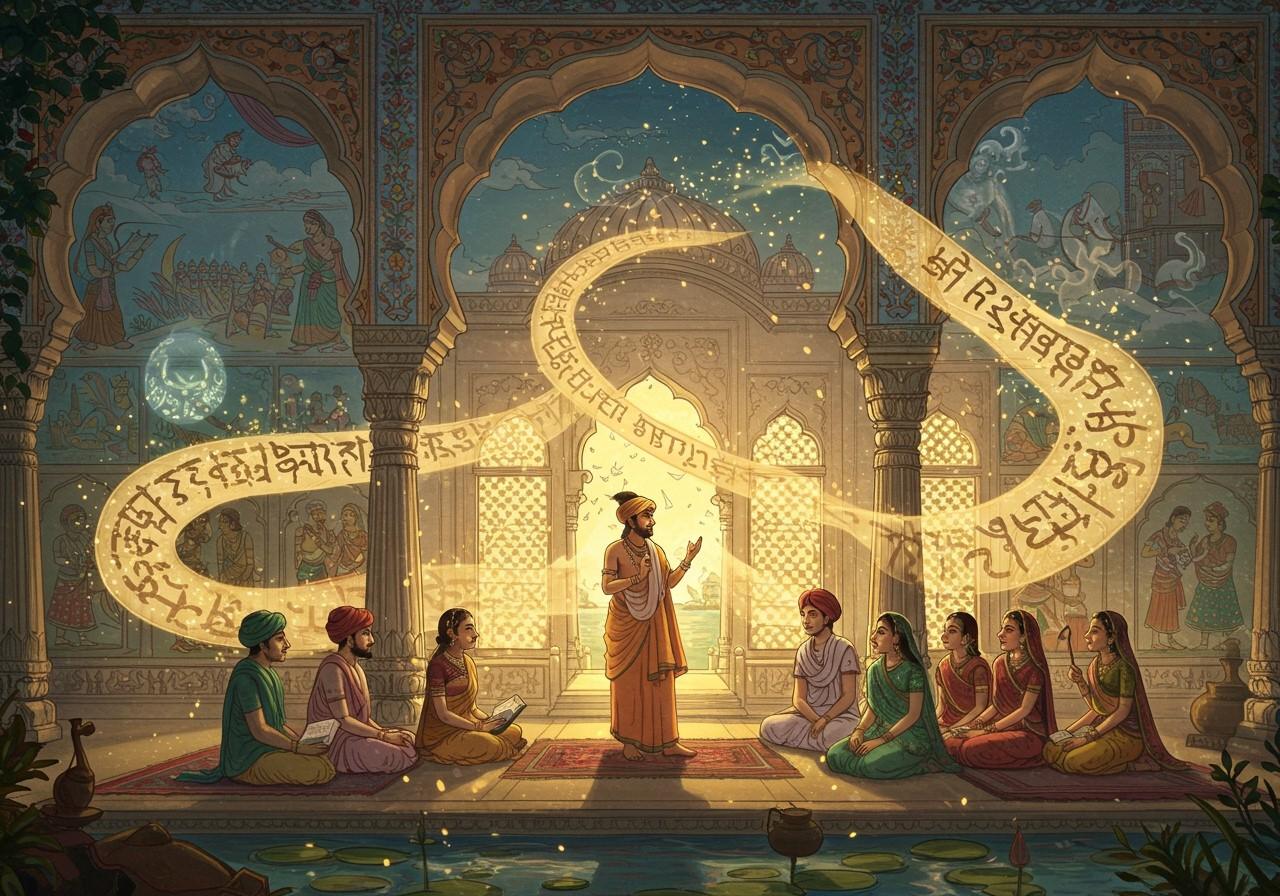
Prakrit, a group of Middle Indo-Aryan languages, played a pivotal role in India’s linguistic and cultural evolution. Used from around the 5th century BCE to the 12th century CE, these languages, while sometimes viewed as less formal than Sanskrit, significantly impacted ancient Indian literature, culture, and the development of modern Indo-Aryan languages.
Origins and Development
Prakrit languages emerged from Vedic Sanskrit, serving as the vernacular counterpart to the more formal, literary Sanskrit. Developing in the Gangetic plains, early Prakrit became crucial in Jain and Buddhist texts like the Jain Agamas and the Pali Canon. Several Prakrit variations existed, including Maharashtri, Shauraseni, Magadhi, and Ardhamagadhi. These languages featured simplified phonetics and grammar compared to Sanskrit, contributing to their widespread use among diverse groups.
Geographical Reach
Prakrit spread across ancient and medieval India. Maharashtri was prominent in Western India, while Shauraseni held sway in Central India. Prakrit’s influence reached the Deccan region, evident in inscriptions and literature from the Satavahana dynasty. The Maurya and Gupta empires also utilized Prakrit in inscriptions, highlighting its administrative and cultural significance. Furthermore, Jain and Buddhist monastic centers like Sravasti, Mathura, and Ujjain employed Prakrit, as did regional dynasties such as the Chalukyas and Rashtrakutas. Prakrit continued to flourish in literary works and dramas by renowned poets like Kalidasa and Sudraka, ultimately influencing the development of regional languages like Marathi, Gujarati, and Kannada.
Literary and Cultural Significance
Prakrit’s contribution to Indian culture and literature is undeniable. Poets like Hala, author of Gathasaptasati, employed Prakrit in classical Indian literature. Ancient Indian dramas often featured characters speaking Prakrit to represent different social classes, adding depth and realism to their narratives. Prakrit played a key role in disseminating Jainism and Buddhism through its use in religious texts. Inscriptions in Prakrit provide valuable insights into ancient India’s social, political, and economic landscape. The language’s influence extended to regional literary traditions and folk literature, enriching India’s cultural tapestry.
Prakrit’s Enduring Legacy
Prakrit’s profound impact on India shaped early religious texts, connected diverse regions, and enriched literary traditions. From the Gangetic plains to the Deccan, Prakrit facilitated communication and cultural exchange. These languages enabled the spread of Jainism and Buddhism, leaving an enduring mark on Indian heritage. Understanding Prakrit allows us to appreciate India’s linguistic diversity and historical depth. Scholars continue to preserve Prakrit manuscripts, honoring a language that united communities and fostered traditions. Prakrit’s legacy remains a vital thread in India’s rich cultural fabric, reminding us of our shared past and the unity that binds us.
FAQs on Prakrit
Where was Prakrit spoken? Prakrit was spoken across various parts of ancient India, including Magadha, Avanti, and Maharashtra, between the 5th century BCE and the 12th century CE.
Is Prakrit spoken today? Prakrit is not actively spoken today but has influenced numerous modern Indian languages, including Marathi, Gujarati, and Kannada, shaping their vocabulary, grammar, and pronunciation.
What is the origin of Prakrit? Prakrit languages descended from Sanskrit, evolving as the common tongue for everyday communication in ancient India, offering a simpler, more accessible form of expression.
Who used Prakrit? Prakrit was used by a wide range of people, from commoners and traders to playwrights, poets, and religious figures, particularly in Jain and Buddhist texts.
How did Prakrit influence modern Indian languages? Prakrit contributed significantly to the development of many modern Indian languages, providing foundational elements of vocabulary, grammatical structures, and phonetics, shaping their present form.
Are there any Prakrit texts available? Yes, numerous ancient texts exist in various Prakrit languages, including Jain scriptures, Buddhist literature, and secular works like poetry and drama, offering a glimpse into the past.
Why did Prakrit decline? The decline of Prakrit can be attributed to the resurgence of Sanskrit as a literary language and the subsequent rise of regional languages, which absorbed many Prakrit elements while developing their distinct identities.
Can Prakrit be learned today? While not widely taught, some universities and institutions offer courses and research opportunities in ancient Indian languages, including Prakrit, providing avenues for those interested in exploring this rich linguistic heritage.
Explore Authentic Cultural Products at Poojn.in
Connect with India’s rich cultural heritage through Poojn.in, India’s leading online store for cultural and religious products. Discover a wide range of authentic items, from traditional attire and puja accessories to spiritual books and home decor. Experience the essence of Indian culture with Poojn.in.
Looking for specific products related to traditional practices? Explore our selection of turmeric cream, pure camphor, incense sticks, and more. Delve deeper into Indian traditions with explorations of the Ramayana and other cultural narratives available on our blog.


